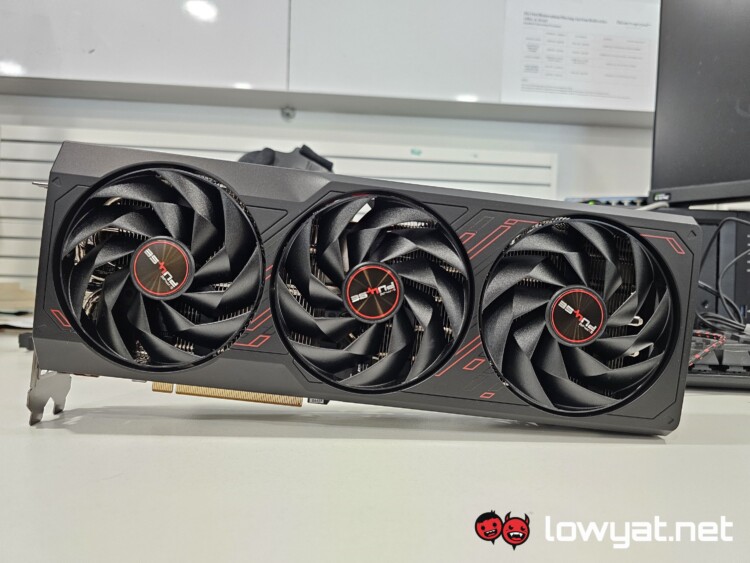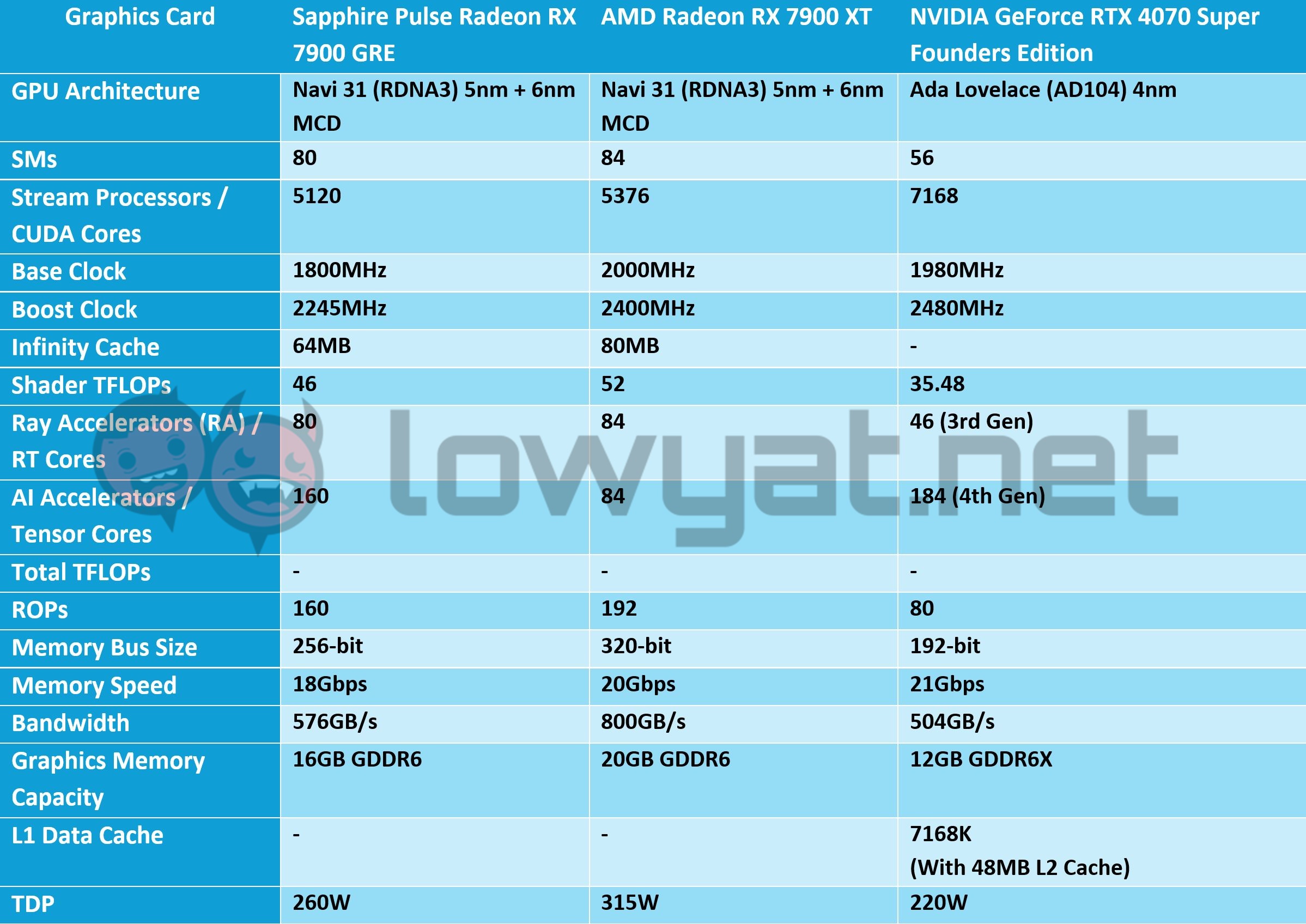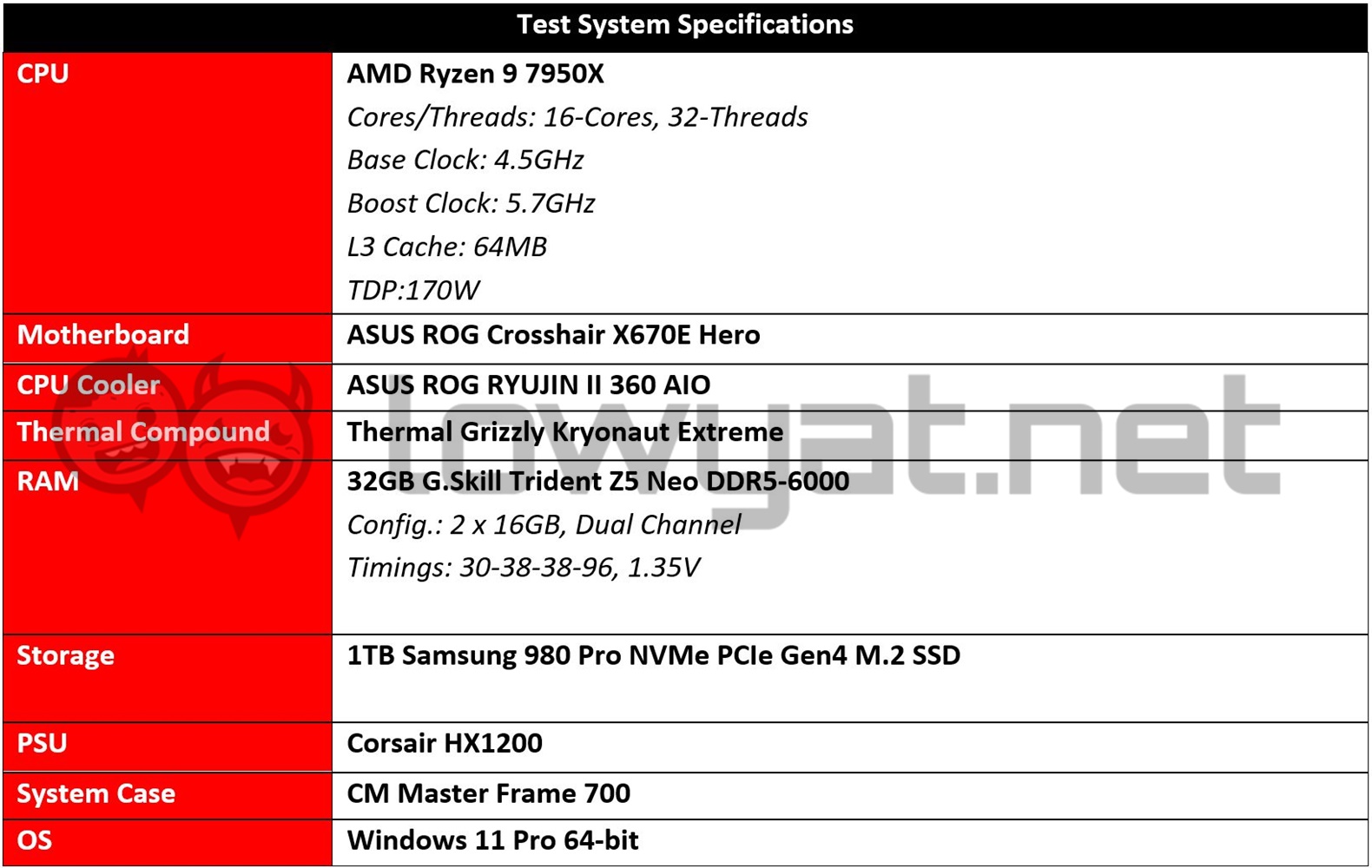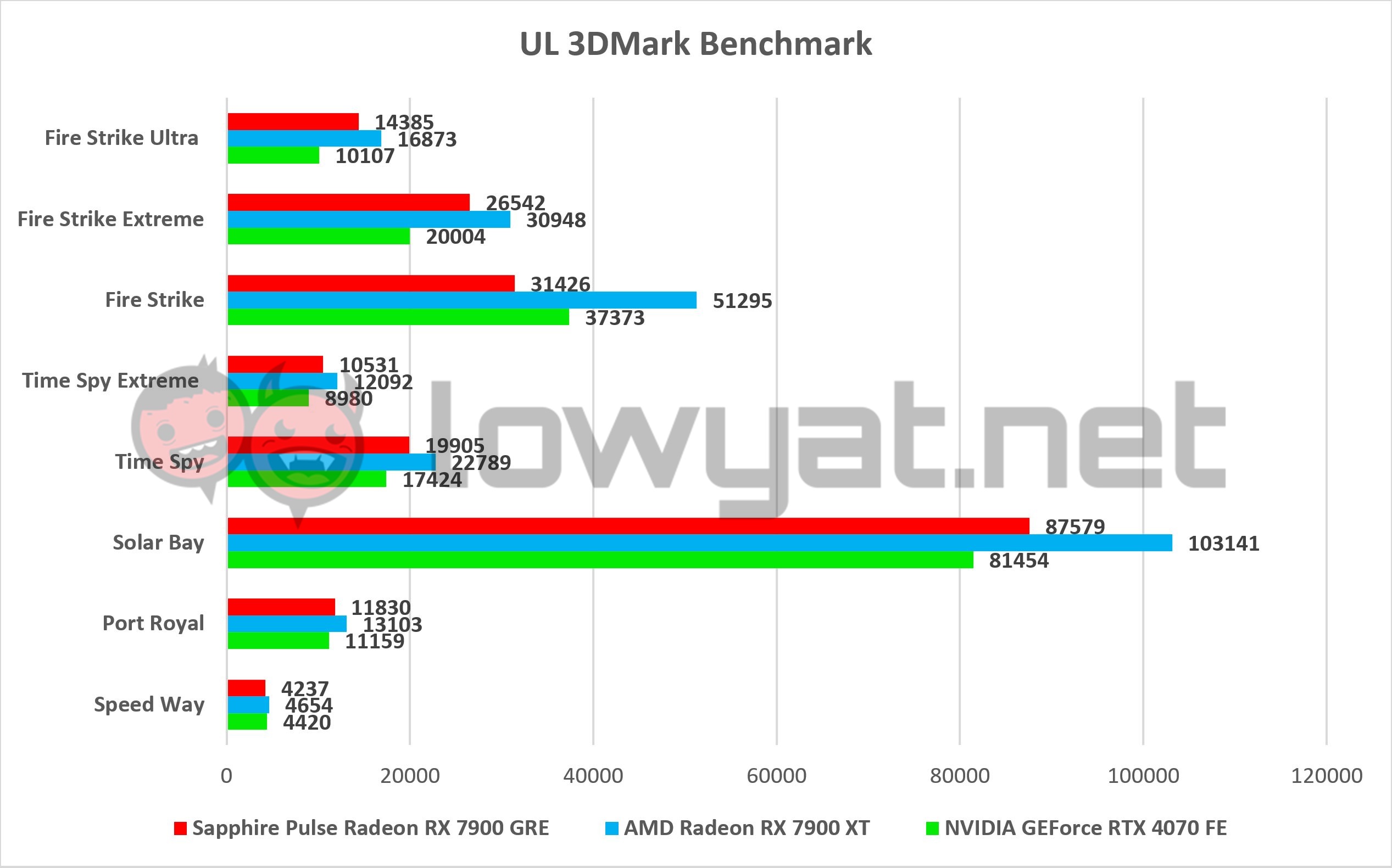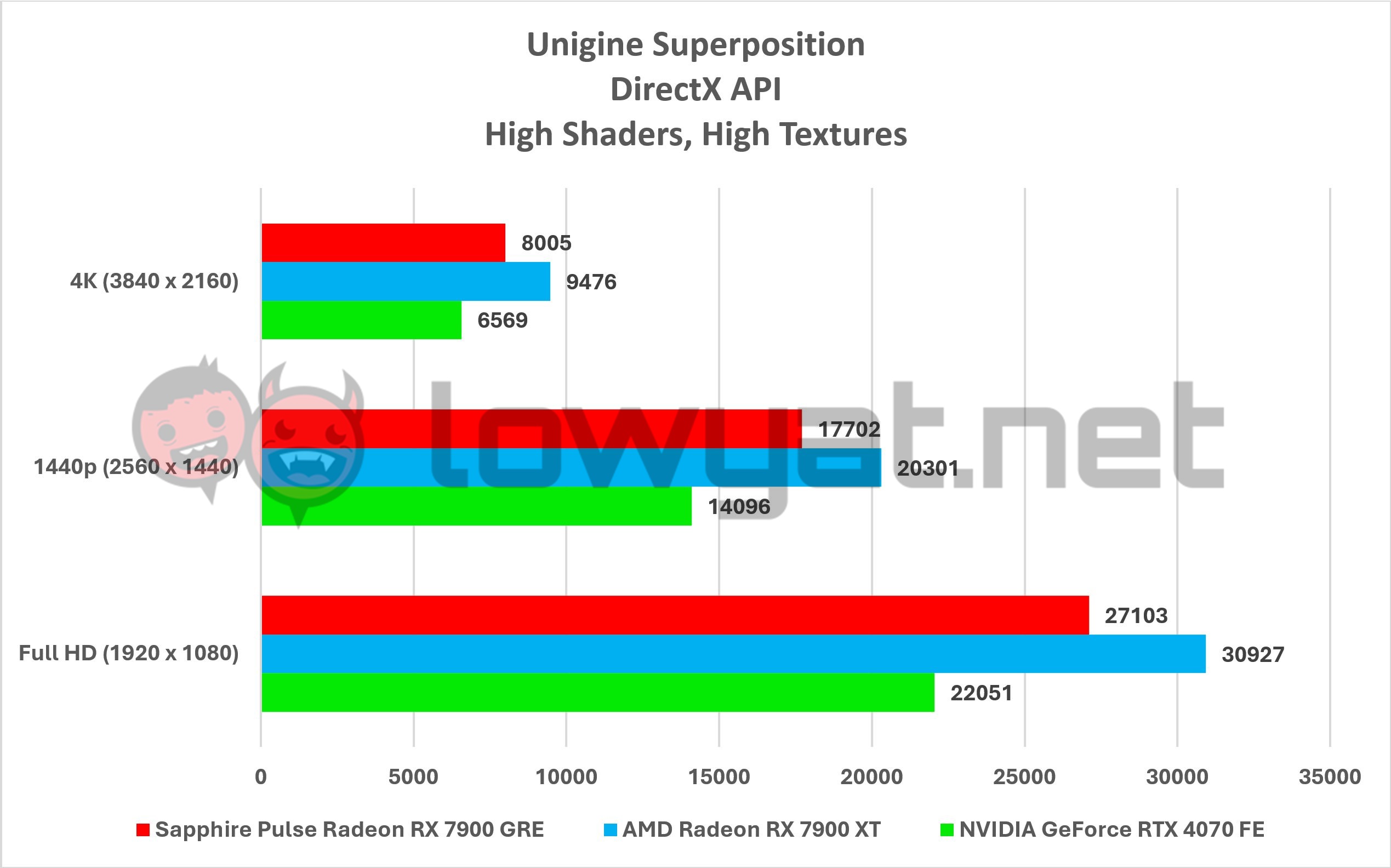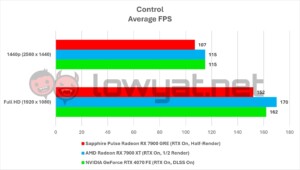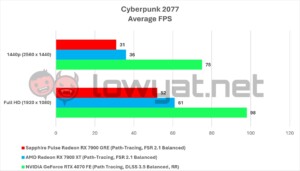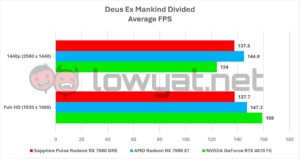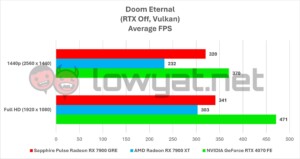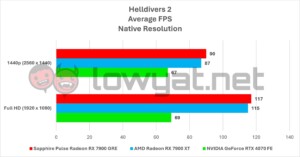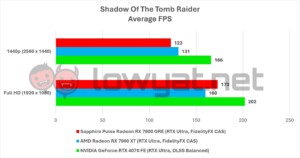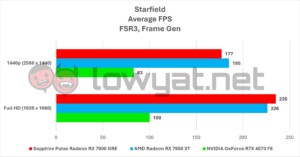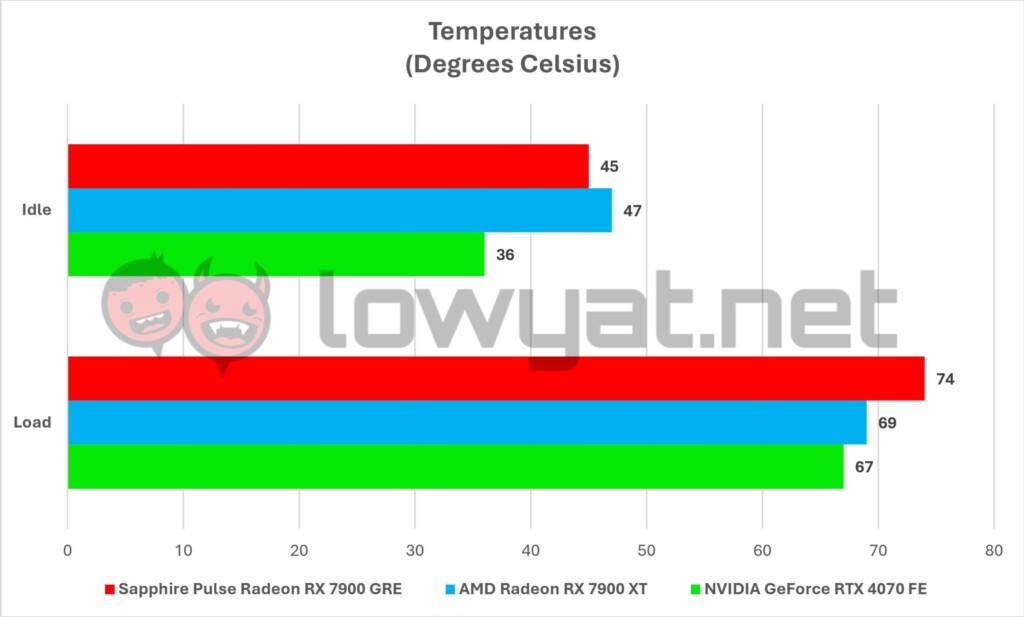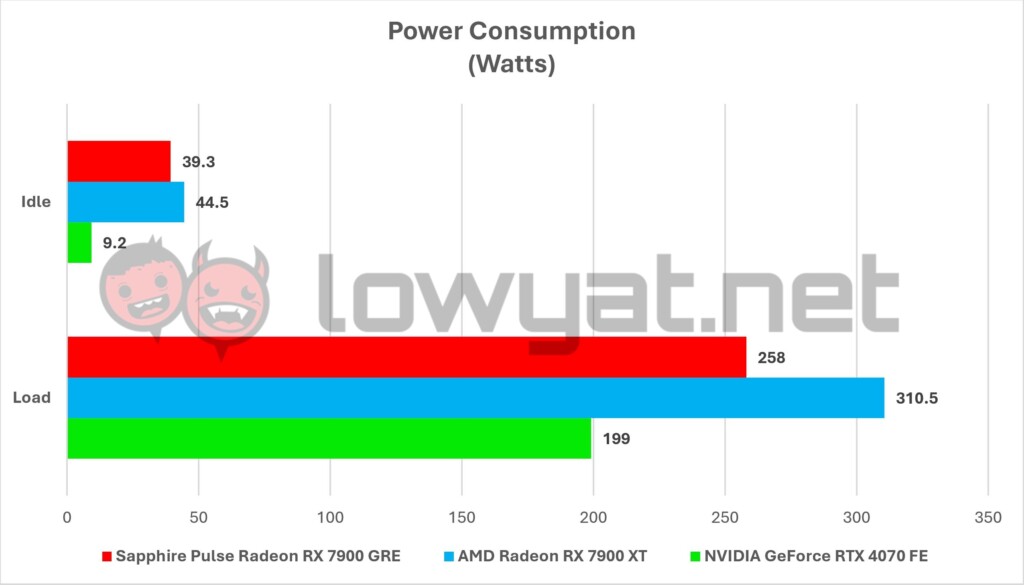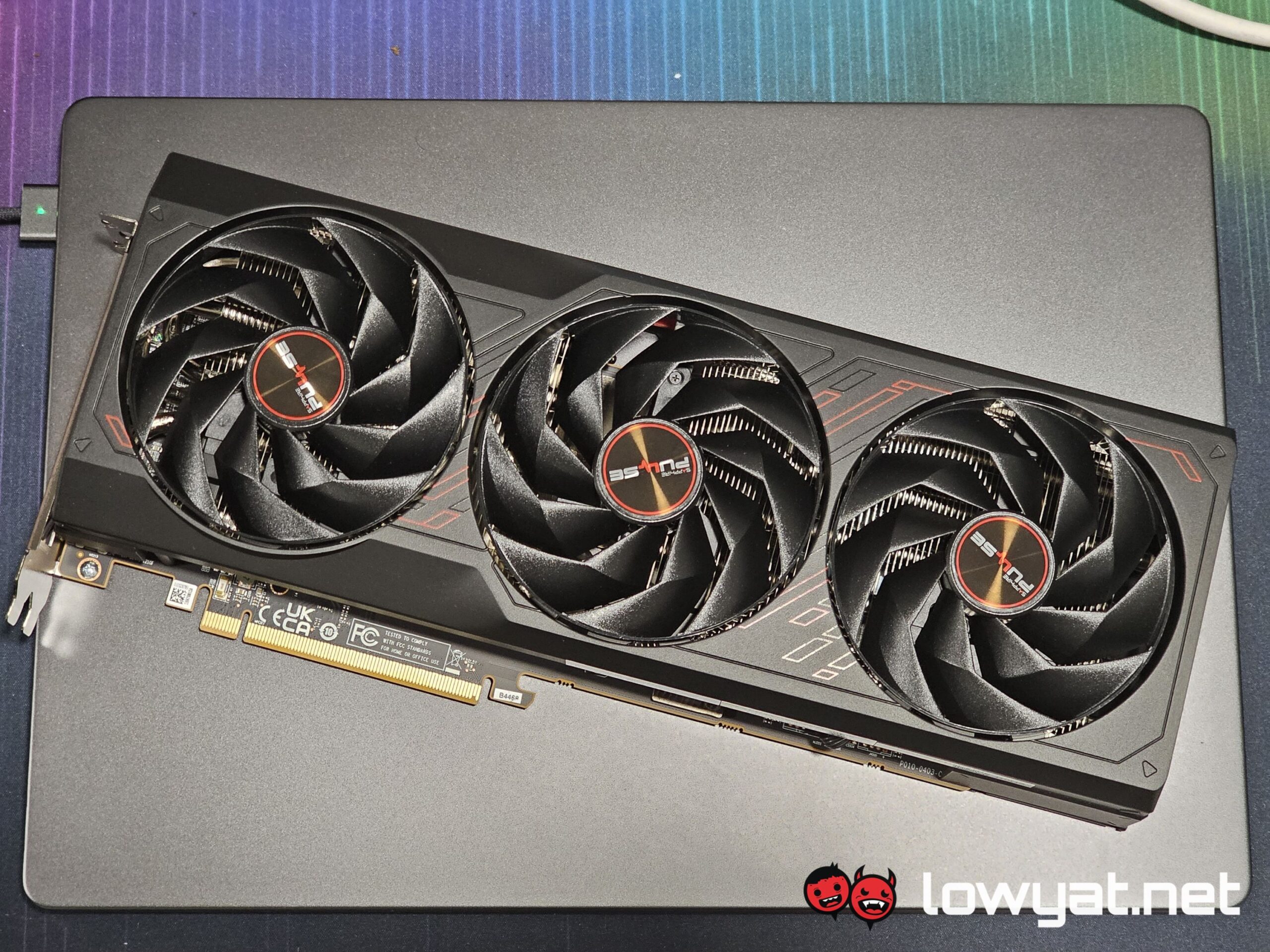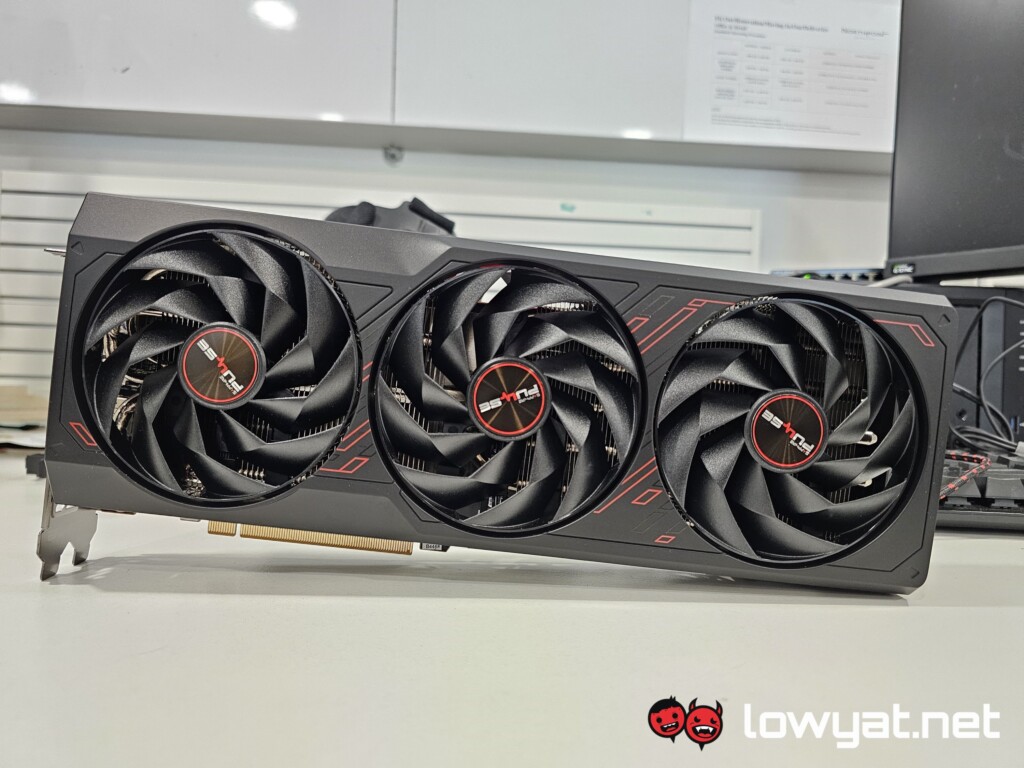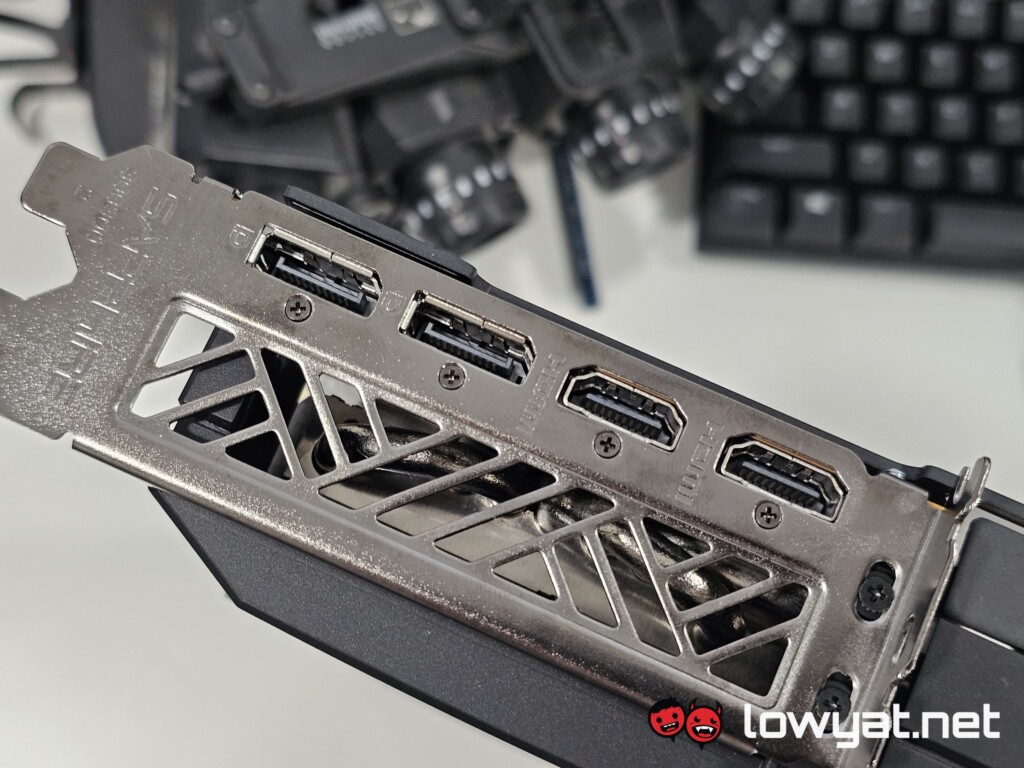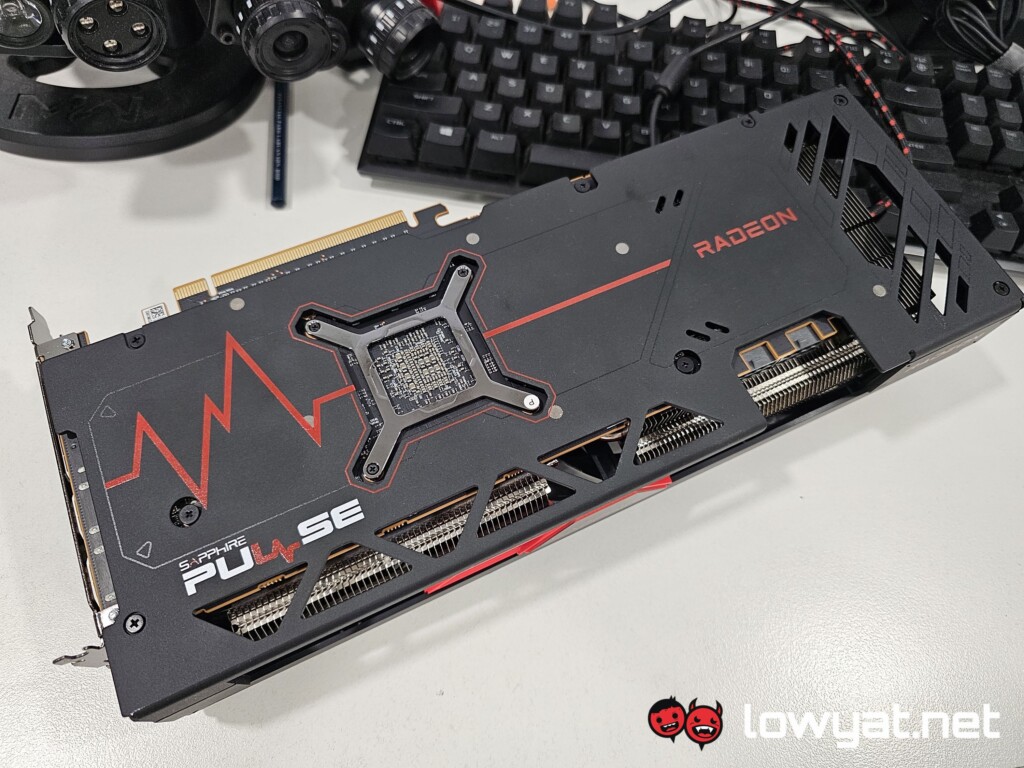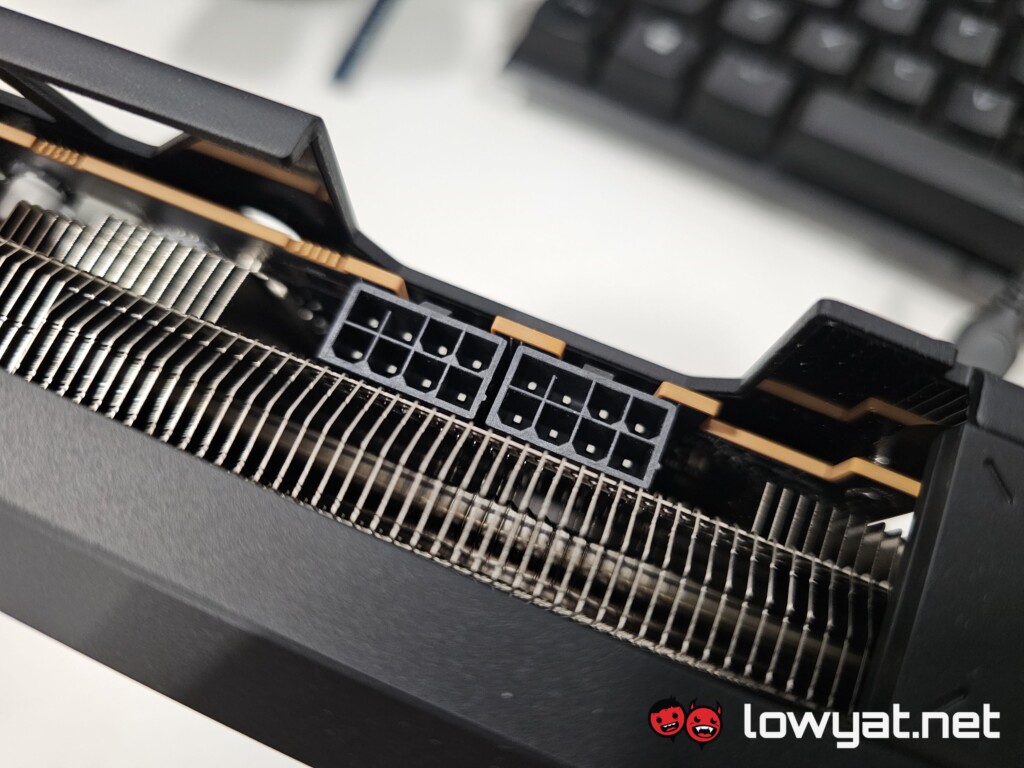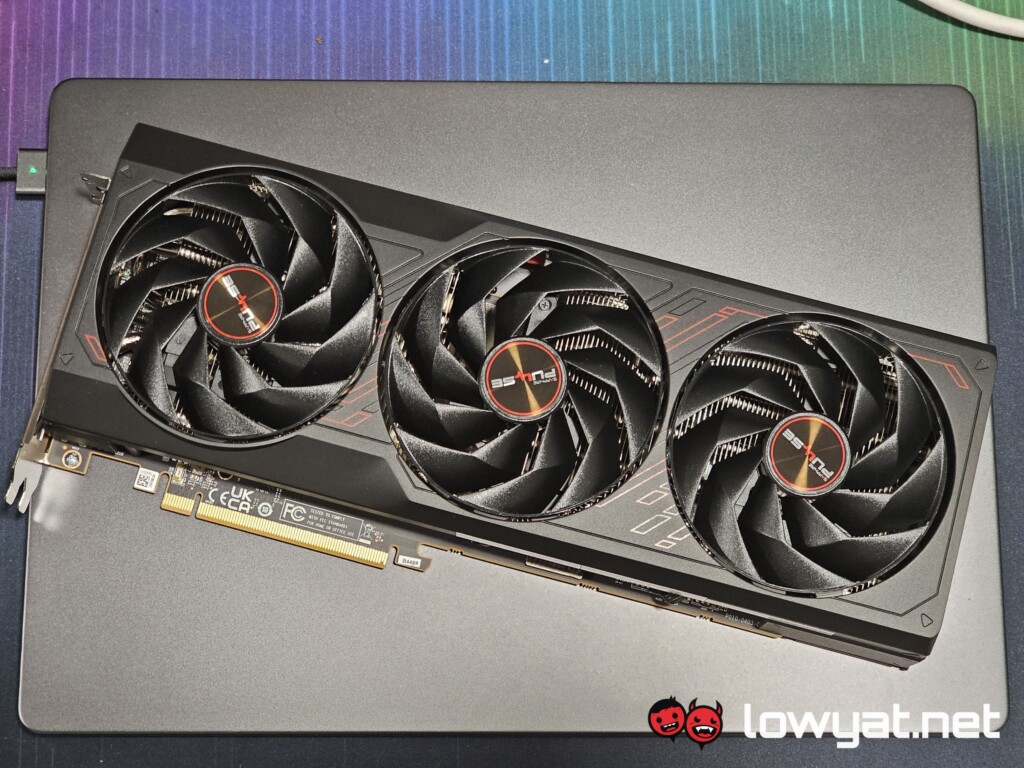The Radeon RX 7900 GRE has been out and about for a while now, but it basically only entered our market fairly recently. Originally intended to be a China-only graphics card, its power and visual prowess is said to be on par with NVIDIA’s GeForce RTX 4070. Technically speaking, that is.
Well, with the card in our lab, we gave it the usual one-two on our testbed to see if that is the case.
Specifications
Design
The first thing you need to know is that there are no reference cards or models of the 7900 GRE. AMD has left the cooling solutions for the card up to its board partners. In this case, the unit I have in my lab is one custom-cooled by Sapphire. In this case, it’s a Sapphire Pulse variant, complete with a triple-fan configuration, a bare bones cooler shroud, and the obligatory, if not standard backplate for added rigidity, along with a cutout of the GPU’s location.
Beyond that, there’s not really much else to talk about that you or I wouldn’t already know about the card. As per the spec sheet, the base and boost clock of this 7900 GRE is rated at 1927MHz and 2293MHz, respectively. Like its other Radeon RX 7000 Series counterparts, the card is based off the 5nm die lithography from TSMC, and features 16GB of GDDR6 graphics memory. To power it up, your system will require two 8-pin PCIe connectors.
Testbench
The testbench remains the same as before, meaning that the CPU is still the top-end Ryzen 9 7950X. I am also comparing the 7900 GRE against NVIDIA’s RTX 4070 FE, as well as the Radeon RX 7900 XT. The former is on the list simply because AMD claimed that its card would be on par, so naturally, it’s on the list.
Benchmarks, Temperature, And Power Consumption
I can’t really say that I am surprised at this point but the GRE really does have the chops to go toe-to-toe with the RTX 4070. At least, in most cases. It’s still a little bit of hit-or-miss with the benchmarks, particularly with UL’s 3DMark.
In gaming, the 7900 GRE once again wins in some titles against the RTX 4070, but loses out by a massive margin with others. Case in point, with Cyberpunk 2077, the card is unable to keep up with the Green team’s GPU when path-tracing is activated. That being said, the game still hasn’t received support for FSR3 which in turn supports Frame Generation, a feature that would surely boost the performance of the card.
Speaking of FSR3, Starfield is a title that is clearly in favour of the 7900 GRE, punching way above its weight, and the weight of the RTX 4070 in this configuration. To my surprise, Helldivers 2 is another title that the 7900 GRE seems to be very comfortable with. As you can see in the graphs, it outpaces the RTX 4070 with the game running at the Native option of supersampling, and at a huge margin at Full HD too.
Conclusion
To be critical, given the amount of time RDNA3 has had to mature along with AMD’s constant updates and improvements to its software, the Radeon RX 7900 GRE is a decent graphics card. Unfortunately, that doesn’t change the fact that the card, as a whole, still lacks the wow factor when pitted against the RTX 4070, let alone the RTX RTX 4070 Super.
Is it a value buy at US$549 (~RM2590)? Depends on who you’re asking. As a Radeon GPU, it’s certainly one of the cheaper mid-range graphics cards you can purchase on the market. But let’s be realistic here: visual-enhancing features like ray-tracing and upscaling have become the norm in games, and while AMD is definitely catching up in that department, it’s still nowhere close to what NVIDIA is able to offer with its RTX 40 Series GPUs.
On the upside, AMD’s FSR technology is universally applicable to both newer and older Radeon GPUs, and once again, given that red chipmaker’s gradual improvements to it over time, you can treat the 7900 GRE as a long-term investment for your PC. At least, until RDNA5 makes its debut.
Photography by John Law.
Follow us on Instagram, Facebook, Twitter or Telegram for more updates and breaking news.


